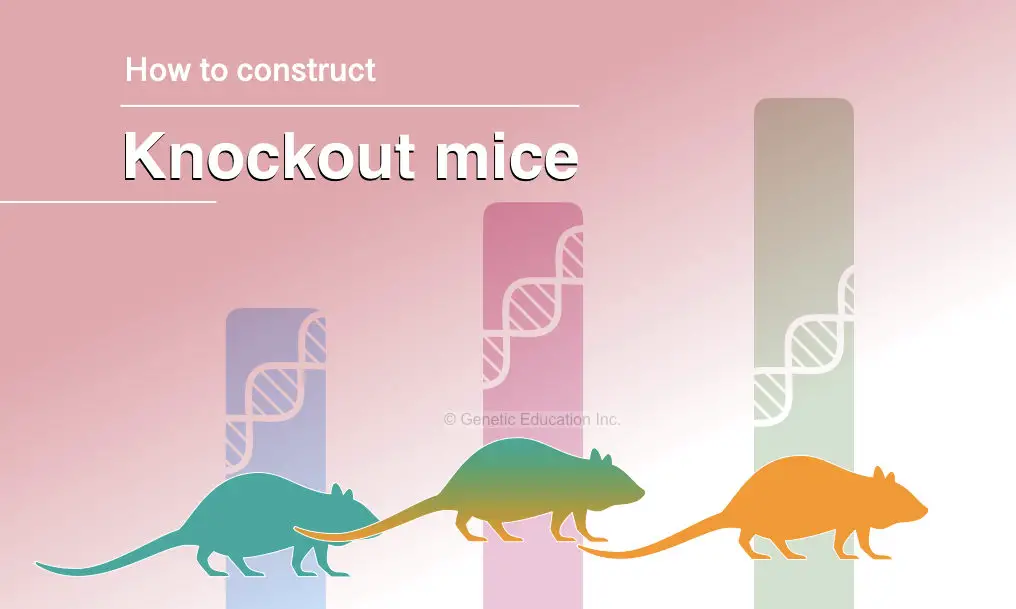“A genetically constructed mice in which one of the functional genes is inactivated or knocked out for studying a particular function is called knockout mice.”
In 1989, Mario R Capecchi, Martin Evans and Oliver Smithies had first constructed genetically engineered knockout mice.
A genetic engineering tool- gene knockout is used to study a particular function by inactivation a gene using homologous recombination, gene editing or artificial mutagenesis.
Mice is one of the best model organisms adopted for gene knockout studies and so it is called knockout mice/ knockouts/ KO-mice.
The knockout mice model are used in order to study genetic disorders, for example, a p53 knockout mice are constructed by inactivating a p53 gene- a tumour suppressing gene.
In the present article, we will jump into the interesting genetic engineering topic, “knockout mice”.
Key topics:
- Why knockout mice?
- How to construct knockout mice
- Applications of knockout mice
- Limitations of knockout mice
- Conclusion
Key Topics:
Why knockout mice?
We can not play with the human embryo, why because it is against the law of nature thus we need a model organism having somewhat similar genome to us.
The model organism are living entities either prokaryotes or eukaryotes used in the genetic engineering studies. For example, bacteria, yeast, mice and plants.
99% of mice genes are similar to us and that is the reason we are using the mice as a tool to study different genes for studying different disease models.
By introducing a disease gene, or removing some of the functional genes, we can study different disease model, Also, the developmental biology of the mice is similar to us.
It is easily available and can grow faster in the lab, henceforth we are using model organism mice to study the human genome.
How to construct knockout mice?
Using modern genetic engineering technique and molecular genetic technologies a knockout mouse is constructed. Different steps of knockout mice construction are given below:
Selecting a gene:
The first step in constructing gene knockout mice is to select a nucleic acid sequence we wish to study.
The entire mouse genome sequence is now available online, thus by analysing it, we can select our gene of interest or sequence we wish to study.
We can collect data regarding the location of the gene, the structure of a gene and the length of the gene. Once the dry lab work is completed, a plasmid DNA is constructed.
Construction of vector:
Vector is a vehicle used to transfer a gene of interest to the target location in a cell. A plasmid is one of the well known and widely used vectors for constructing a gene knockout mice.
A plasmid DNA is a circular, double-stranded and a self-replicating DNA molecule present in a bacteria. It carries our gene of interest to the target location using homologous recombination.
For using it in genetic engineering experiments, a plasmid must have several important characteristics.
A plasmid must have an origin of replication, an antibiotic resistance gene and a recognition site.
Here for constructing gene knockout mice, our gene of interest is replaced by the altered DNA sequence or mutant nucleic acid.
Along with the target sequence, we must have to insert a marker gene used to validate the experiment. An antibiotic resistance gene is selected as reporter marker and inserted between the target nucleic acid sequence.
A double marker genes system is used to validate results more appropriately. In which two different reported gene sequences are used.
The neomycin-resistance gene is commonly and widely used in the knockout mice construction. The neomycin-resistance gene-NeoR is naturally not present in mice thus neomycin is toxic to mice cells and cells immediately dies in the presence of antibiotic neomycin.
Once the NeoR gene is inserted into the mice ES cells, cells can grow naturally in the medium containing neomycin antibiotic.
Here the target DNA sequence is homologous to our gene of interest but it is altered. The NeoR gene is inserted between this DNA sequence.
Both end of the construct now has the homologous sequences to our gene of interest which helps in homologous recombination.
Once the recombination occurs, our DNA sequence along with the NeoR gene replaces the gene of interest. See the image below,
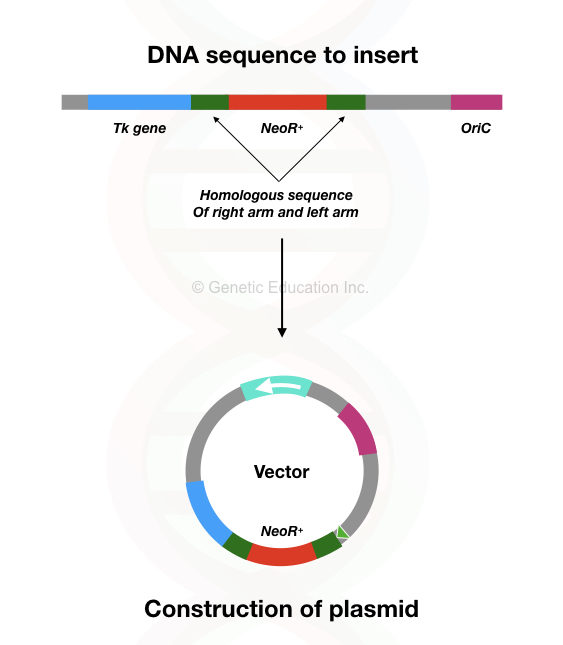
Another marker called negative selection marker is inserted immediately before the target DNA sequence.
The concept of using the negative reporter gene or negative marker is to double validates the results on the experiment.
For example, a Tk gene is used for it, in the presence of it a cell can not survive.
The Tk gene located just before the NeoR gene thus if our insert can not be incorporated properly, the Tk gene also inserted into the target genome and therefore a cell can not survive under the ganciclovir containing media.
This is the reason why we are using the negative marker in knockout mice construction.
Related article: Plasmid DNA- Structure, Function, Isolation And Applications.
Inserting a vector into the target cells:
Here for gene transformation experiments, we are using embryonic stem cells due to its capacity to divide in any type of cells rapidly.
The ES can be divided into any tissue type and develop into mature mice and hence the effect of the knockout gene can be measured starting from the embryonic stage to adult.
Although inserting our vector into the ES cells is another tedious job to perform because the success rate of artificial gene insertion is still very low.
Any way,
Several methods are most widely and routinely used to perform the transformation.
The electroporation method is used widely to perform gene transformation in which under the influence of the electrical current the cell membrane becomes permeable and allows plasmid DNA to enter inside the cell.
In the next step, once electroporation is done, transformed cells are grown in neomycin rich medium, followed by ganciclovir rich medium.
The transformed cells now selected for further processing.
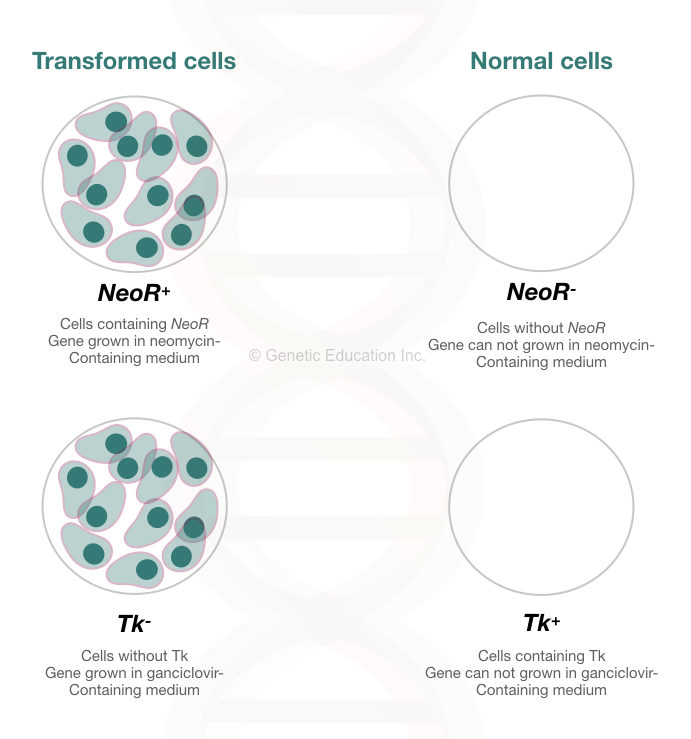
Inserting into mice embryo:
Now the transformed cells are injected into the developing mice embryo. The modified embryo has now two types of cells, healthy and normal mice cells and our genetically modified cells, this mouse is now called chimeric.
Note down that here our knockout mice have two types of cells and are heterozygous for the knockout mutation.
We have to develop a pure homozygous knockout mouse to study the genotype associated with the gene of our interest.
Breeding:
In the next step, mice developed from the chimeric embryo is crossed with the normal mice which can possibly produce three different types of mice; homozygous normal, heterozygous and homozygous mutant.
Homozygous mutant type of offspring is selected for further examination.
Or in other condition,
The heterozygous male mice are crossed with the heterozygous females which produce 25% homozygous mutant mice.
Related article: Nucleic Acid- Monomer, Dimer And Polymer.
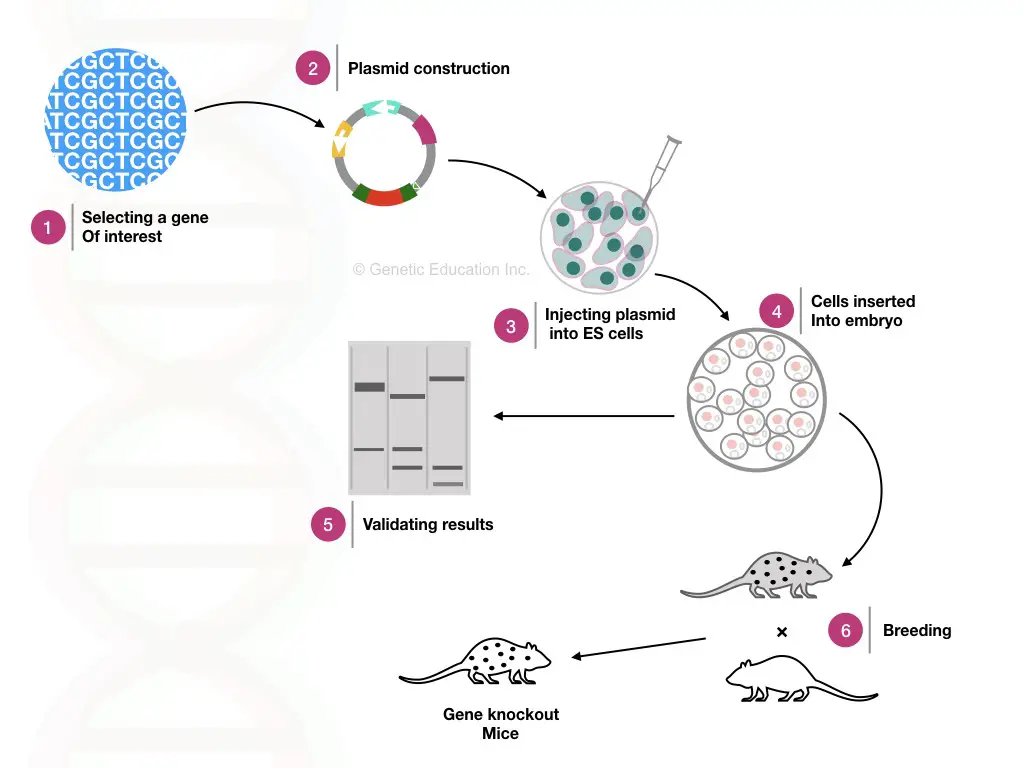
Validating results:
Phenotypic characterization:
The first line of validating the results are the visible characteristics or phenotypes of knockout mice.
Shape, size, colour, weight, metabolism and behaviour are some of the visible phenotypes that can be studied by comparing our knockout homozygous mice with the normal homozygous mice.
Although gene required for the development can not be studied like this, for such type of phenotype tissue-specific gene knockout mice are created.
Tissue-specific gene knockout often known as a conditional knockout is used to study a specific phenotype by inactivating a gene, for specific time in a specific tissue.
Polymerase chain reaction:
The polymerase chain reaction is one of the crucial validating tool used in genetic engineering and construction of gene knockout mice. Read more: Polymerase chain reaction.
One must have to validate the sequence whether a correct sequence is inserted into the genome or not because the change can also be induced by environmental factors as well.
Henceforth without the confirmation, we can not say the change in phenotype is done by us or by environmental stimuli.
Now for PCR first, extract DNA from the knockout mice or from the embryo of the transformed cell or from the homozygous mutant embryo, any sample we can take.
Read more on DNA extraction: Different types of DNA extraction methods.
In the next step, design three sets of primers:
- Set 1: specific to the gene we wish to study
- Set 2: specific to the NeoR gene
- Set 3: specific to Tk gene
You can perform three different PCR reaction using the gradient PCR or can perform a multiplex PCR reaction.
(here I strongly recommended to used gradient PCR).
If we got the results with the first set of primer that means our gene is still present in the genome (transformation failed).
If we get results with the set 2 primers, yes, the target sequence along with the NeoR gene is inserted into the genome.
If we get the results with set 3, some other sequences are also incorporated in the genome.
Thus for validating our results we only want amplification for set 2 primer, only NeoR gene-specific primers amplify the DNA.
If DNA bands with other two sets of primers are observed, our experiment failed. As a positive control amplify the DNA of normal mice as well so that we can amplify the DNA with the first set of primers.
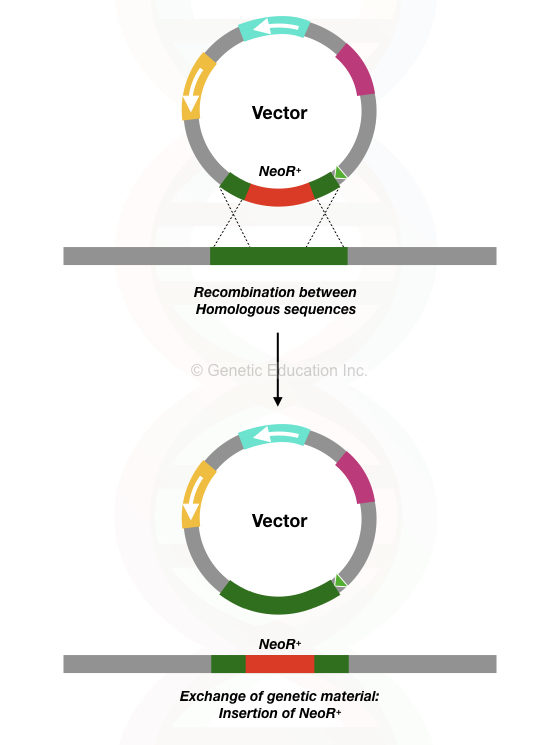
Applications of gene knockout:
Inactivating a gene can help us to study the function of that gene and how it behaves in different conditions.
The knockout mice are applicable in loss of function gene studies.
It is also used in studying and modelling of different genetic disorders such as diabetes, obesity, heart disease and cancer.
A genetically constructed knockout mice are applicable in gene editing and preventive studies.
Drug discovery and the effect of different drugs can be studied using knockout mice as well.
Limitations of gene knockout:
One of the major limitations of the knockout mice is the lethal effect of gene inactivation. Around 15 to 20% of gene knockout mice are died due to the lethal effects of gene knockout.
Around 20% of knockout mice can not reach adult age thus the effect of the gene in early and late-onset of the age can not be determined.
It may produce a different phenotypic effect which may not be observed in humans.
The efficiency of the technique is also very low therefore not all cells can be altered for constructing knockout mice.
The off-target effect of a gene is another major problem which inactivates other linked genes as well.
Conclusion:
Knockout mice are one of the important “research tools” we can say, for understanding the gene function. In addition to this, it is helpful in studying different disease models by inactivating different disease-causing genes.
Sources:
Austin CP, Battey JF, Bradley A, et al. The knockout mouse project. Nat Genet. 2004;36(9):921–924. DOI:10.1038/ng0904-921.
